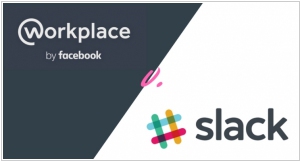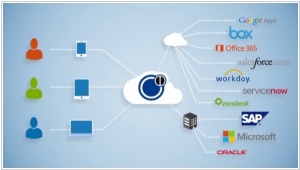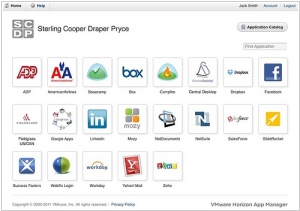Cloud based Active Directory
Updated: August 01, 2023
Cloud Active Directory, often referred to as Azure Active Directory (Azure AD), is a cloud-based identity and access management service offered by Microsoft as part of its Azure cloud platform. It serves as a modern and comprehensive solution to manage user identities, authentication, and access control for cloud-based and on-premises applications and resources. Cloud Active Directory enables organizations to centralize user management, define access policies, and enforce security measures across various cloud-based services and applications, including Office 365, Azure services, and third-party applications. With features such as single sign-on (SSO), multi-factor authentication (MFA), and role-based access control (RBAC), Cloud Active Directory enhances security, improves user productivity, and simplifies the administration of identity-related tasks. As organizations increasingly adopt cloud technologies, Cloud Active Directory plays a vital role in ensuring a secure and seamless user experience across the entire cloud ecosystem.
See also: Top 10 Public Cloud Platforms
See also: Top 10 Public Cloud Platforms
2019. Google Cloud adds a managed service for Microsoft’s Active Directory

Microsoft's Active Directory continues to be widely utilized as an identity service in enterprise environments. While Google Cloud Platform has previously enabled manual setup of Active Directory deployments, the company has now elevated its offering by introducing a managed service in beta. With this development, Google assumes the responsibility of managing the service and automating various aspects, ranging from server maintenance to security configurations. In line with Google's emphasis on hybrid-cloud deployments, this service also facilitates the extension of on-premises Active Directory domains to the cloud.
2016. Facebook Workplace will open app store to compete with Slack

A key factor contributing to the immense popularity of the collaboration service Slack is its seamless integration with third-party business applications. This capability allows teams to effortlessly discuss new deals sourced from CRM systems, process incoming tickets from Helpdesk platforms, and include customers who communicate via Skype in their discussions. Recognizing the value of this approach, Facebook aims to emulate Slack's success by incorporating it into their enterprise social network, Workplace. To achieve this, Facebook has launched a developer platform that facilitates easy integration with other applications. These integrations will subsequently be available for users to discover and install from the Workplace app store. Presently, the network supports integration with Google's G Suite, Microsoft's cloud Active Directory, as well as single sign-on services such as Okta and OneLogin.
2015. Google Compute Engine adds Windows Server

Google has announced that it is extending support for Windows Server on its Compute Engine platform to all users. This means that Cloud Engine users can now benefit from Google's Compute Engine SLA when running their applications on Windows Server 2012 R2 and the older Windows Server 2008 R2. Additionally, developers now have the opportunity to leverage Google's platform for running a wide range of applications, including Active Directory, SQL Server, SharePoint, Exchange, and ASP.NET servers. Notably, Google offers Microsoft License Mobility, enabling Microsoft customers to seamlessly transfer their existing software licenses from on-premise deployments to Google's cloud, without incurring any additional licensing fees.
2014. Okta gets $75 million to develop cloud identity management solution

Cloud-based identity management provider Okta has successfully secured $75 million in a series E financing round, raising its total funding to $155 million. Okta offers companies a cloud-based service that serves as an IT monitoring tool, enabling them to effectively manage access permissions within their internal network. Upon subscribing to the service, users can install Okta's on-premise software and integrate it with their Active Directory or other network tracking services, as explained by Okta's COO, Frederic Kerrest. This integration allows companies to configure their cloud services to utilize Okta, enabling seamless communication between the software and the cloud. Consequently, a company's cloud infrastructure becomes aligned with the established firewall settings, providing consistent information coverage. While Okta faces competition from established companies like IBM and Oracle, as well as various startups offering identity management tools, it currently stands out as a leading player in this market segment.
2011. VMWare launches single sign-on service

As known, the main problems with SaaS-apps arise not with users, but with IT administrators, because they are losing control over what's happening. Because of this, they resist the SaaS implementation, claiming in particular, that they can't control authentication data across multiple SaaS services. To solve this problems, the new class of services appeared - SSO (Single Sign-on services). We have already reviewed one of them - OneLogin. There are some others, but all of them are semi-startups, which can't fully satisfy the IT staff. And finally there is a solution from the solid company - VMware Horizon App Manager. ***
2009. Windows 7 - cloud-native OS

Yesterday Windows 7 was officially released. Of course, it's a very important event for IT users and professionals, but we, first of all, wondered about how this new OS could influence the Cloud Computing sphere. And though, at first sight, it has nothing in common with the Cloud, there are some technical aspects that make Windows 7 (in combination with its server counterpart Windows Server 2008 R2) the first cloud-native OS from Microsoft. The fact is that the Windows-based IT infrastructure highly depend on two key components: Active Directory (for network administration) and Network Access Protection (for network security). Until Windows 7 both these technologies didn't work if server was located in the Cloud (on remote server) but not in Local Area Network. ***

